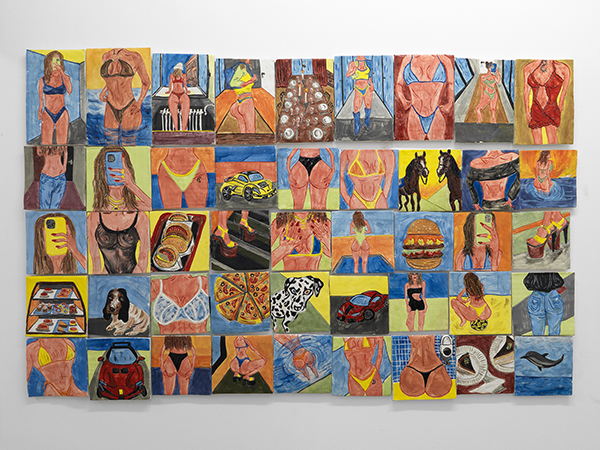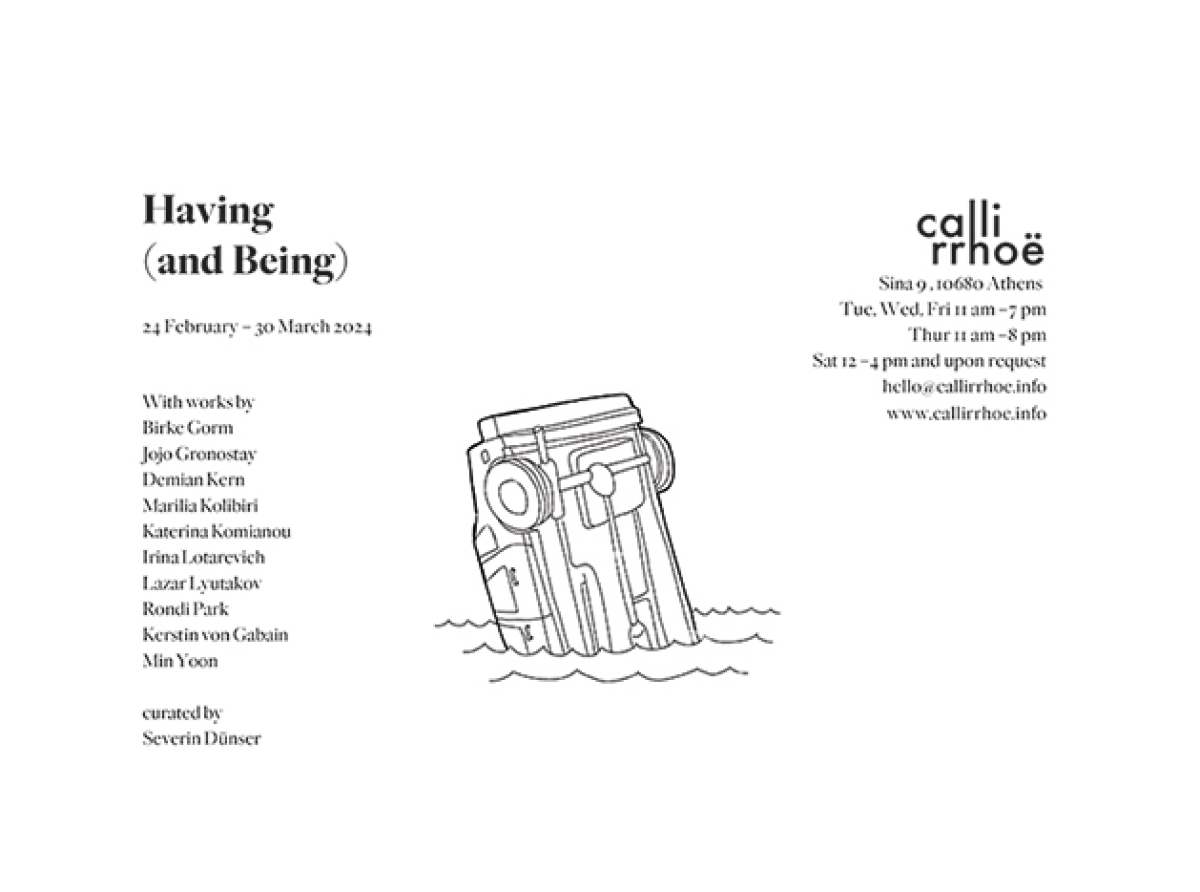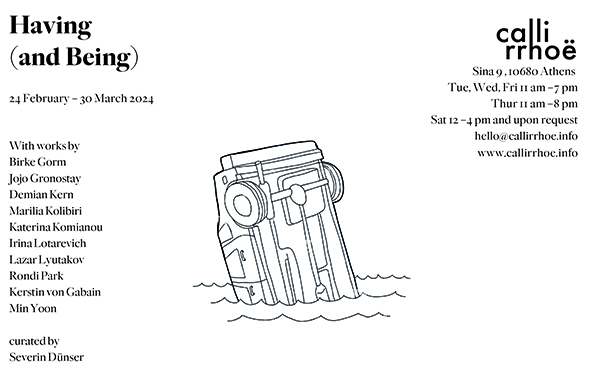
We are notjust surrounded by things; we also surround ourselves with them. And they tell more than we might assume. The relationship we develop with things reflects who we are. What we have is not only what we need but also a reflection of how we want others to perceive us. Hence, having and being are aspects that influence each other, making the human essence tangible. The exhibition attempts to describe our multifaceted being through materializations of desires. Sculptures, readymades, photographs and paintings bring us closer to ourselves, but also to the things we live with. The use of materials is crucial in Birke Gorm’s works.
The primary material isjute, which Gorm (born in 1986) combines with polypropylene yarn and aluminum. The women depicted in the artworks are engaged in activities in kitchens— taking objects down, putting them up, and reorganizing what is needed. Of course, this is a critique of labor and its implications for gender equality, as addressed by Gorm.
The sculptures by Jojo Gronostay (*1987) are not large in size but are intensely black. They give the impression of African sculptures crafted from ebony, yet they are actually composed of two flacons and coated with black paint. While modernist art in the 1920s drew inspiration from African art, Gronostay takes a twist in the opposite direction by transforming consumerist items into something that bridges postcolonialism, identity, and global economic structures.
The painting by Demian Kern (*1990) is an oily reproduction of projections. The image projected onto the canvas consists of pieces from a Swarovski collection of figures. What is typically transparent, light, and shiny transforms into an opaque structure of reflections. We can still recognize the original filter, but the forms we see have little in common with the glittering world that the company is known for.
The works of Marilia Kolibri (*1993) mostly revolve around everything we consume—whether it be food, products, or images. In contrast to her solo show, the ceramics in the group exhibition focus on how we share pictures of everything we appreciate. Naturally, it's not limited to animals, ice cream, or fashion; the central theme is often the very own body, which becomes objectified and turns into a matter of social-media narcissism.
The figurines by Katerina Komianou (*1984) don't just resemble cats; they serve as symbols warding off evil. Similar to apotropaic statues, they protect us from negative forces. Acting as sacred gatekeepers, they safeguard our connection to wilderness and purification-much like a magic amulet might shield us from the evil eye.
Two works by Irina Lotarevich (*1991) encompass our object-ability. 'Steel Price Index (test strip)' is a condensed version of a metal workshop's catalog index, where the larger type corresponds to the artist's height. On the other hand, 'Binder with Skins 1' is a cast of a folder with two pieces of meat on top of it. Having moved from Russia to the USA and then to Austria, binders were the first choice for gathering personal documents to prove her identity
The installation by Lazar Lyutakov (*1977) consists of a metal structure and two lava lamps. The metal structure adds a certain seriousness to the work, which is counterbalanced by the two amorphous lights. They are quite humorous in relation to the technicality of the arrangement, thus not very functional. Even though they share light, they are more designed to highlight the interplay of their wax fillings. Interestingly, the lava lamp fillings are used on the humorous side to generate security codes that contribute to making our internet a safer space.
The two works by Rondi Park (*1993) point in opposite directions. One features a tree bearing fruit, symbolizing the burden of desire and the intricate feeling of inadequacy. Although the tree generously relinquishes its offspring to gravity, this starkly contrasts with the absence of a friend who disappeared during the creation of the artwork. The other piece originates from Goody Hair Pin, a ribbon brand that the young artist wore in the 1990s. The work is a blend of different motifs from Goody Pin, exploring themes of kindred spirits and the artist’s childhood aspiration: to have a friend with whom she could feel safe.
The sculpture by Kerstin von Gabain (*1979) is neither an original nor a fake; instead, it exists in the realm between questions of representation and imitation, inner experiences, and emotions. The artist employs mimesis as a tool to mediate between the external world and its reflection within the artistic work. Nevertheless, it remains unclear whether the nose of Pinocchio is modelled in life-size.
The works by Min Yoon (*1986) consist of two small sculptures that fall between the media typically found in his body of work. While he primarily creates sculptures using various materials and drawings, the two exhibited pencils are inscribed with the words: ‘Easy to identify and symbolise.’ This phrase is a slight variation of a sentence found on BIC ballpoint pens, serving, as the artist describes it, “as a description of the good design of its commodity”.

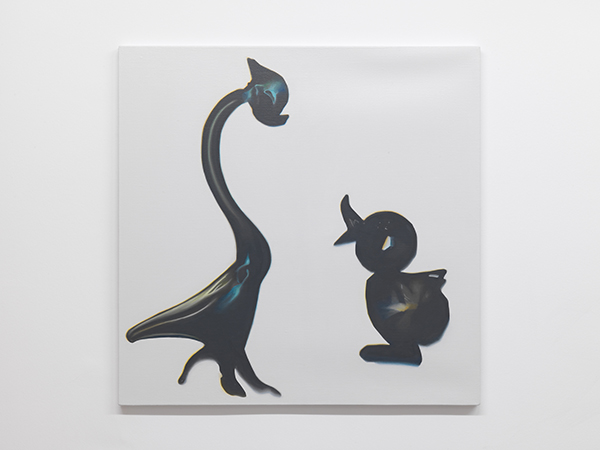
Demian Kern, Ohne Titel, 2024, Oil on canvas, 90 × 90 cm, Courtesy of the artist and Krobath gallery, Vienna

Birke Gorm, hand-me-down (4), 2022, Jute, polyprophylengarn, aluminium, 80 × 55 cm, Courtesy of the artist and Croy Nielsen, Vienna
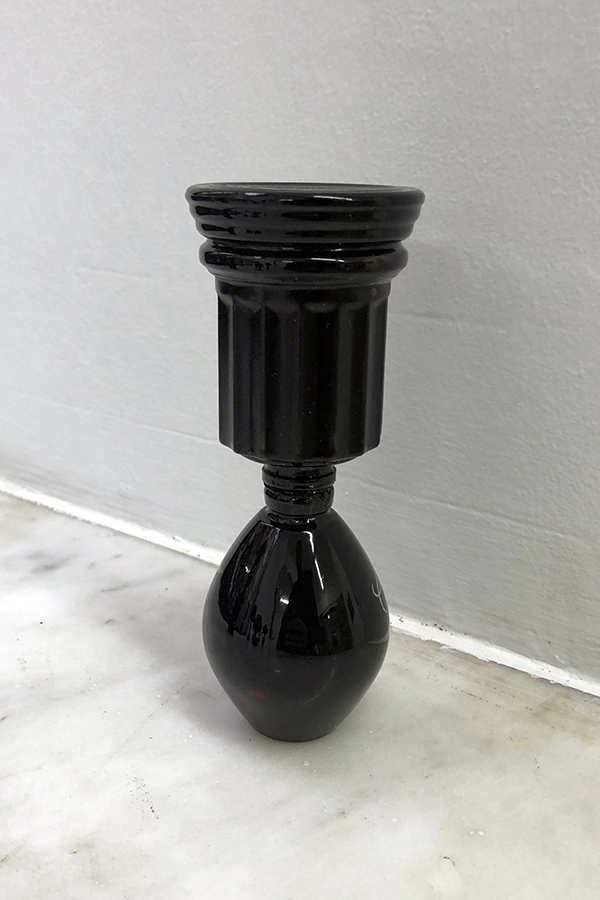
Jojo Gronostay, Kreaturen 1 & 2, 2022, Installation, perfume bottles, Variable dimensions, 2 pieces, Courtesy of the artist and Galerie Hubert Winter, Vienna
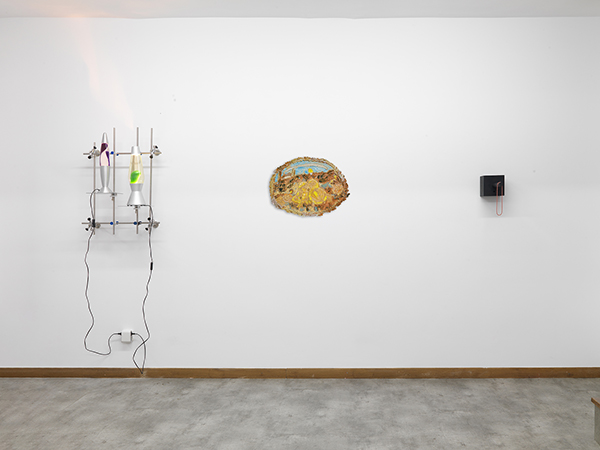
Installation shot, image
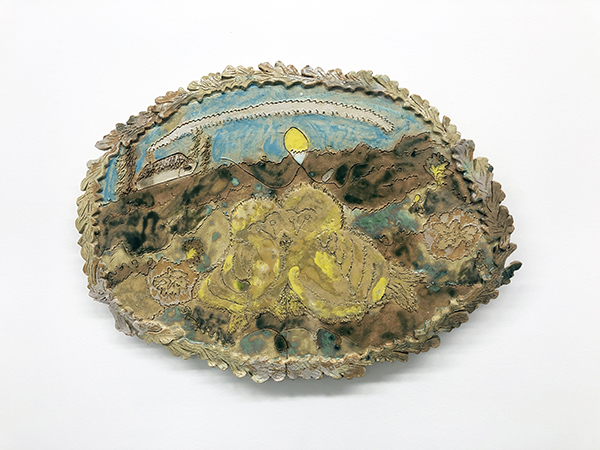
Rondi Park, Domodachi goody pin #2, 2021, Glazed ceramic, 55 × 45 cm, Courtesy of the artist
